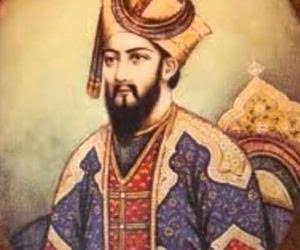Medieval Indian History Notes – On Rajendra I – For W.B.C.S. Examination.
History is a reasonably popular optional subject that candidates choose in the W.B.C.S. mains exam. It is an important subject as far as the W.B.C.S. is concerned because history is covered in the prelims exam and also in the general studies papers in the mains. If you are an W.B.C.S. aspirant you cannot get by without studying history.He completed the conquest of Sri Lanka in 1017 AD and captured the whole of Sri Lanka and made it a part of Chola empire. He suppressed the rebellions of a captured portion of the Krishna Tungabhadra doab. He maintained friendly relations with Chalukyas of Vengi.Continue Reading Medieval Indian History Notes – On Rajendra I – For W.B.C.S. Examination.
He launched on expedition to Orissa and maintained matrimonial relations with the Ganga dynasty of Orissa. He then reached Bengal upto Ganga river in 1022 AD and defeated dynasty of Orissa. He then reached Bengal Ganga river in 1022 AD and defeated the Pala ruler of Bengal, Mahipala Rajendra I then assumed the tittle of Gangaikonda and founded a capital by the name Gangaikondacholapuram on the mouths of the Gangaikondacholapuram. His expedition to Bengal along the east coast was undertaken to establish Chola domination over the bay of Bengal that it was called the Chola lake.
He had a well organized naval fleet with which he launched an 100 years naval war with Sailendra rulers of Sumatra. He sent two embassies to China for Promoting trade and commerce.
Chola Administration
King: was the most important person in the Chola administration. All authority rested in his hands. He often went on tours in order to keep better touch with the administration . The king was aided and advised by a council of ministers who held office at the pleasure of the king. There was a fully developed secretariat to oversee the functioning of Central administration.
Military Administration: The Cholas maintained a large army consisting of infantry, cavalry and elephants which were called the three limbs of the army. The venetian traveler Marco Polo says that all the bodyguards of the king burnt themselves in the funeral pyre of the dead king.To check the History Optional syllabus , Click Here.
Revenue Administration: The Cholas paid attention to irrigation and used river such as Kaveri for this purpose. Raja Raja I conducted a land survey during his time in order to fix the governments’ share of land revenue. In addition to land tax, income was derived from tolls on trade, taxes on professionals and also from plunder of the neighbouring territories.
Provincial Administration: The Chola empire was divided into 9 provinces called mandalam, each under a governor called Mandala mudalis who were paid salary in the form of lands. They were required to maintain an army out of the resources and maintain peace in their respective territories.
District Administration: The provinces were in turn divided into divided districts called Nadus which were about 500 in number and were run by an autonomous assembly called Nattar.Also Read , W.B.C.S. Examination Notes On – Environment – Synecology.
Local Administration: There were two types of villages at the local in the Chola empire. One type of village consisted of people from different caste and the assembly which ran this type of village was called ‘ur’. The second type of village was ‘agrahara’ types of village which were settled by Brahmins in which most of the land was rent-free. The assembly of this agrahara type of village was a gathering of the adult men in brahmana villages called ‘Sabha’ or ‘mahasabha’. These villages enjoyed a large measure of autonomy. The affairs of the village were managed by an executive committees to which educated person owning property were elected by drawing lots or by rotation. These members had to retire every three years. These members had to retire every three years. There were other committees for helping in the assessment and collection of land revenue for the maintenance of law and order, justice etc. One of the important Committee was the tank committee which looked after the distribution of water to the fields. The mahasabha could settle new lands and exercise ownership rights over them. It could also raise loans for the village and levy taxes. The self-government enjoyed by the Chola villages was a very fine system. However, the growth of feudalism tended to restrict their autonomy.
Please subscribe here to get all future updates on this post/page/category/website


 Toll Free 1800 572 9282
Toll Free 1800 572 9282  mailus@wbcsmadeeasy.in
mailus@wbcsmadeeasy.in



















































































































